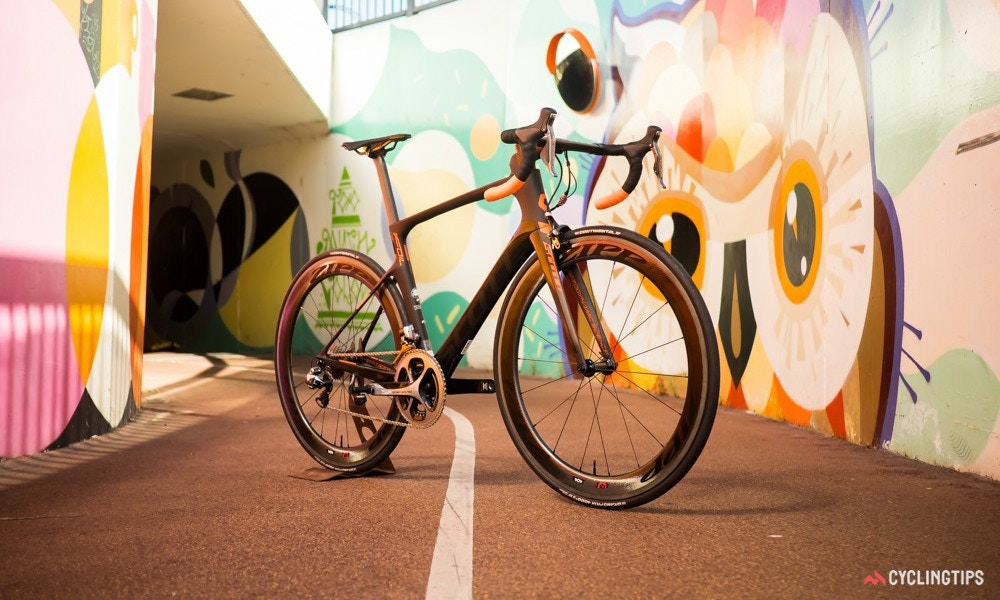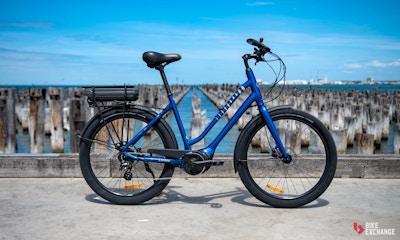Matthew Hayman brought a whole lot of interest to himself and the bike he was riding — Scott’s new Foil — when he won Paris-Roubaix earlier this year. We had our first look at the new bike last year, now Australian tech editor Matt Wikstrom reports on the performance of the second-generation Foil after spending a few weeks with it.
Scott’s Foil began life as Project F01, a frameset that was first seen under Mark Cavendish at the Tour de France in 2010. The design made use of truncated airfoil profiles to reduce the aerodynamic drag of the chassis and while it couldn’t top the performance of the market leaders, it managed to get close while keeping the weight of the bike low.
In retrospect, the design of Scott’s first aero road bike appeared conservative. Aside from a few thicker tube shapes and some curious lumps and bumps, buyers had to look closely to find evidence of the aerodynamic thinking that was guiding the design.
The new Foil, by contrast, eschews all of that early conservatism to boldly pronounce that it is very clearly an aerodynamic road bike.
CyclingTips’ Australian editor Matt de Neef attended the launch of the second-generation Foil last year and spent a few hours on the new bike. He found that amongst a long list of changes and/or updates, Scott’s designers had developed a new integrated handlebar/stem, lowered the seat stays, re-positioned the rear brake calliper under the chain stays, and re-modelled the head tube junction to improve on the aerodynamics of the bike for a claimed 6W saving at 45km/hr.
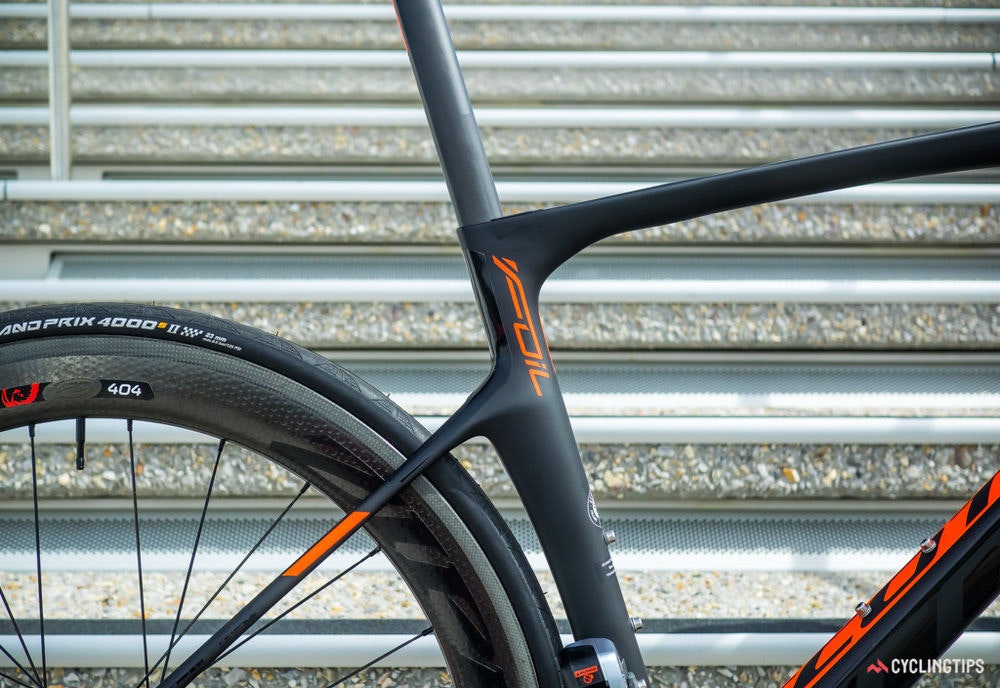
At the same time, the compliance of the frame was increased dramatically (89%) to essentially match that of the Addict. Paradoxically, the company also claims it was able to increase the stiffness of the bottom bracket, head tube and forks by 6-13.5%. Clearly, Scott’s designers and engineers were intent on creating a second-generation product that was clearly distinct from the first.
There are five models in the Foil range for 2016, starting with the flagship Foil Premium, followed by the Foil Team Issue, Foil 10, Foil 20 and Foil 30. For this review, I spent a few weeks riding the Foil Premium, courtesy of Scott’s Australian distributor.
BEFORE THE RIDE
Matt de Neef provided a thorough account of the technical details surrounding the design of the new Foil in his initial report, so there’s no need to re-visit them here. What is worth noting are all of the features that have been carried over from the first generation Foil versus the changes that have been made.
Scott continues to make use of HMX and HMF carbon fibre for the construction of the frameset. The pricier HMX is reserved for the Foil Premium and Foil Team Issue while HMF is used for the lower-priced Foil 10, 20 and 30 for a relatively small weight penalty. In both instances, the frame and fork continue as all-carbon offerings save for the replaceable rear derailleur hanger.
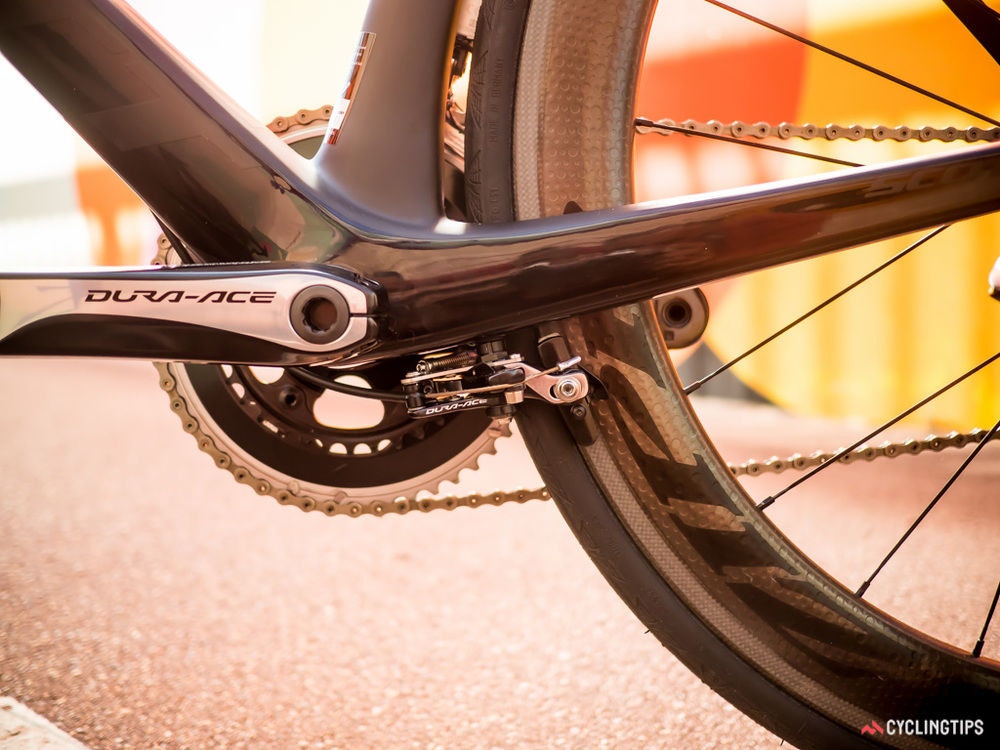
According to Scott, positioning the rear brake on the chainstays requires no extra fortification and allows the seatstays to be engineered for extra compliance.
A BB92 bottom bracket also carries over from the first generation frame, as does a built-in chain-catcher at the seat tube, and internal routing for the frame with interchangeable fittings for electronic and mechanical groupsets. But that’s where the similarities end.
Scott has increased the diameter of the fork steerer from 1.125inch to 1.25inches. The size of the headset bearings has also been scaled up from 1.125/1.25inches (upper/lower bearing) to 1.25/1.5inches. The increased diameters no doubt accounts for much of the increase in the stiffness of the front end for the new Foil.
Centre-mount brake callipers have been done away with in favour of Shimano’s direct mount design. And the seatpost clamp is a new wedge-design that comes complete with a cover that bolts into place. Finally, the integrated interface between the stem and the frame is achieved with a combination of purpose-built spacers and a plastic cowl for the rear of the stem, but these will only work with Syncros Foil stems that come with each bike.
The Foil continues to be offered in seven frame sizes, as detailed in the chart below:
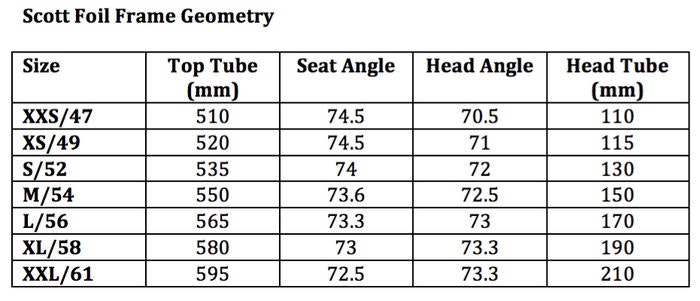
The geometry of the new Foil is identical to the previous version even though the head tube is now 10mm taller for every size. That’s because the axle-to-crown length for the fork was reduced as part of its re-design, so the head tube was lengthened in order to preserve the stack for each frame size.
The bottom bracket drop (67mm) and chainstay length (405mm) are uniform for all frame sizes, while stock stem length increases from 100mm for sizes XXS-S to 110mm for sizes M-L and 120mm for XL-XXL. More details on the geometry of the Foil can be found on Scott’s website.
The Foil Premium is finished in matte black with gloss details and orange highlights for an understated, even shadowy, effect. Every part of the bike, except the front brake calliper, integrates cleanly into one swooping, flowing design that makes me think of a Formula 1 car. It’s a thoroughly modern design that works really well plus it distances the new bike from the first generation Foil.
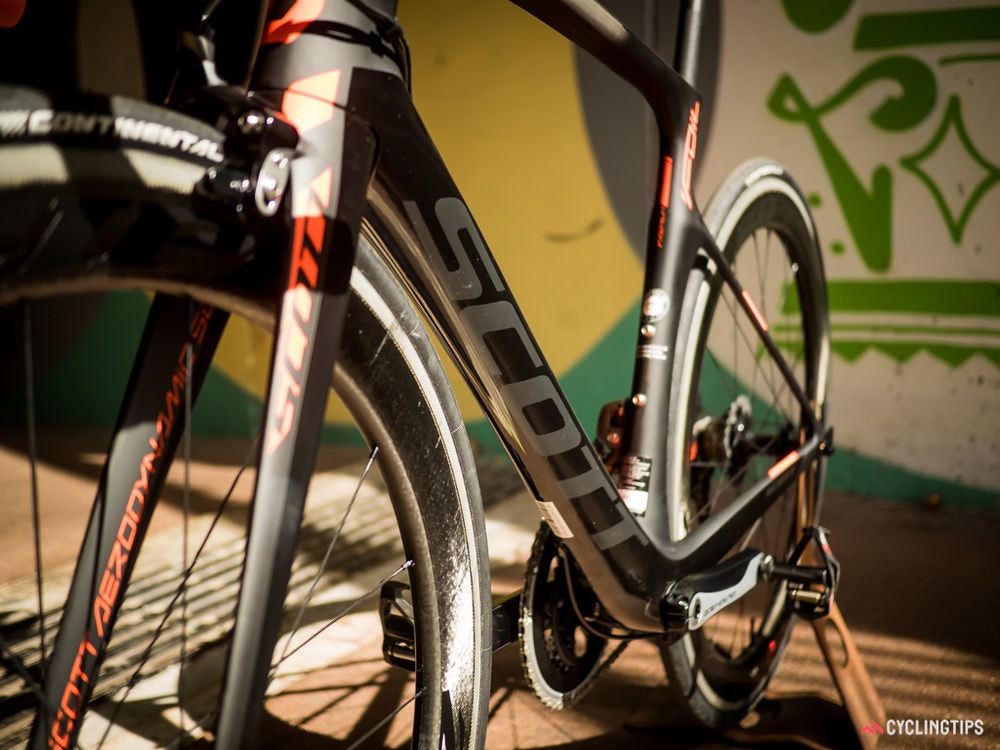
The Foil Premium is equipped with a full Dura Ace Di2 groupset with a 52/36T crankset, 11-28T cassette, and sprint shifters. Scott uses its in-house components partner Syncros to supply the integrated carbon stem/handlebar along with carbon seatpost and saddle. The build is finished off with Zipp’s Firecrest 404 carbon clincher wheelset shod with 23mm Continental GP4000s tyres, a fitting choice for an aerodynamic race bike.
It’s easy to admire the smooth integration of the parts on the new Foil but it does create few problems. First, there is very little clearance between the crank arms, rear calliper and the chainstays, which will prevent the use of some powermeter-equipped cranks. Second, hiding the Di2 junction box in the handlebars makes it difficult to adjust the gears, check on the battery level and charge the system. Third, while Scott offers two Garmin mounts to suit the integrated bar/stem, owners will face difficulties using other devices, including lights.
The chainstay-mounted rear calliper will worry some buyers, and with good reason. The calliper will quickly collect a lot of grime so will require extra attention. As provided, the rear brake cable is fitted with an in-line quick-release barrel near the head tube so owners won’t have any hassles removing the rear wheel.
The size M bike sent for review weighed 6.97kg sans pedals and bidon cages. Interestingly, the first generation Foil Team Issue that I reviewed in 2014 weighed less (6.89kg) even though it was one size larger and equipped with a mechanical Dura Ace groupset (which is heavier than the Di2 equivalent).
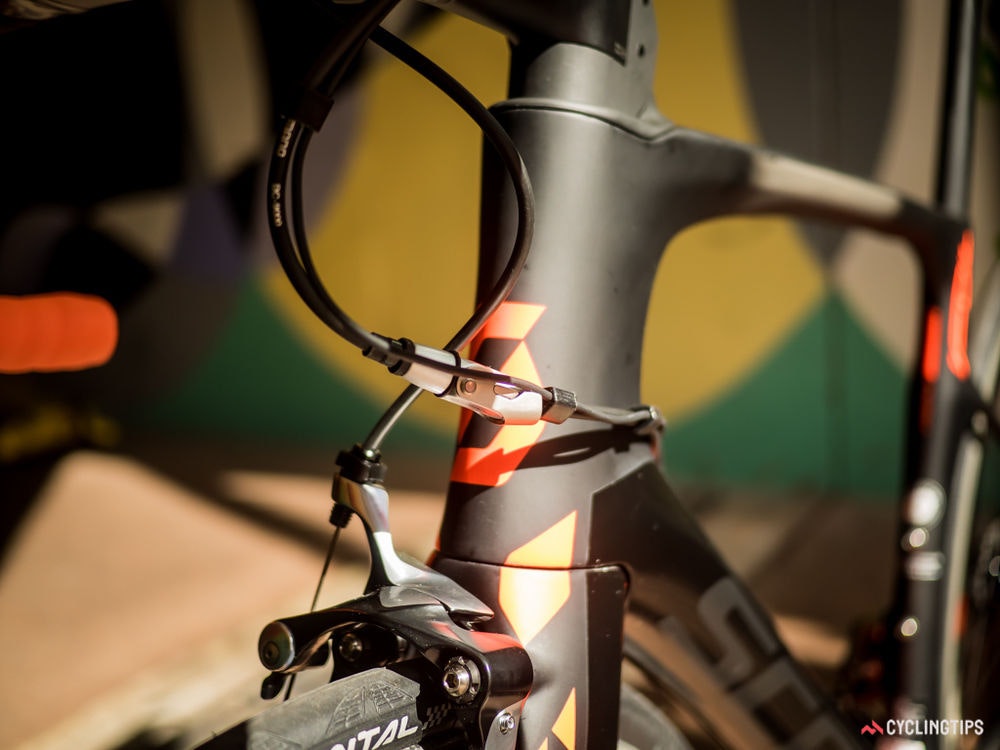
Shimano’s in-line quick-release and barrel adjuster eases the hassle associated with a chainstay-mounted brake calliper.
A comparison of the claimed weights for the framesets has the new Foil (1,295g) weighing in a little heavier than the first generation (1,227g). Weight-weenies won’t find any appeal in the Foil when there are framesets that manage to stay below 1,000g, but I’m impressed that Scott managed to overhaul every aspect of the Foil with only a minor weight penalty.
The Foil Premium lives up to its name when it comes to pricing. Buyers can expect to pay AU$13,500/US$11,999 for the flagship bike. Those on a tighter budget can take a closer look at the lower-priced models in the range, where pricing starts at AU$3,800 for the Foil 30.
All Foil bikes are covered by Scott’s five-year warranty for the frame and two years for the forks. For more information, visit Scott.
AFTER THE RIDE
The first-generation Foil was a fine bike that boasted the kind of race-specific stiffness that inspired — and rewarded — aggressive riding but exacted a pretty high price when the roads turned rough. That’s why Mat Hayman opted for the Addict when contesting Paris-Roubaix for Orica-GreenEdge in 2014 and 2015.
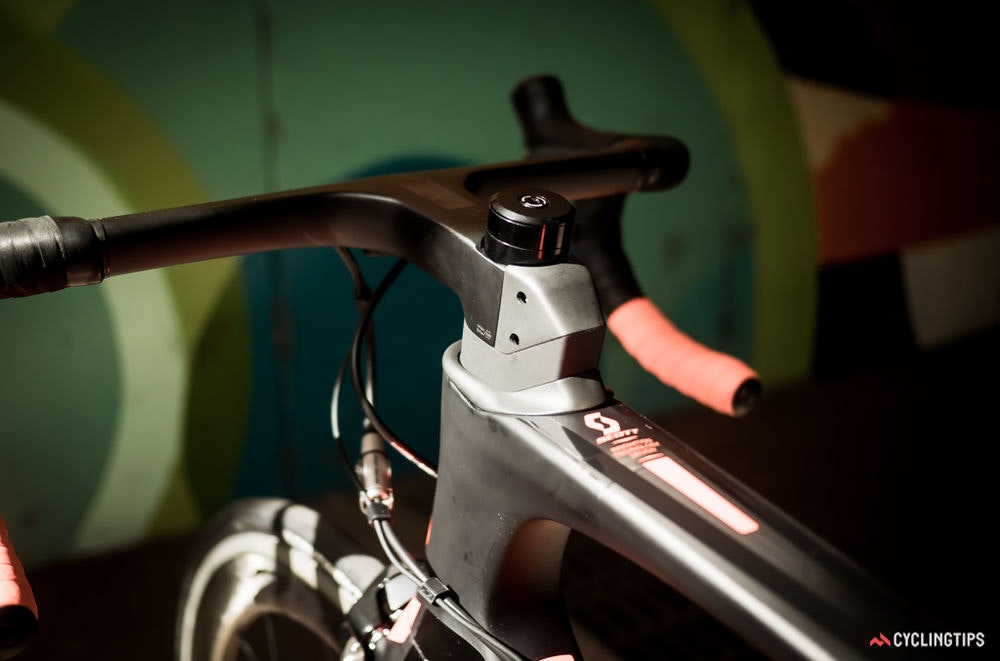
Specially-shaped pieces are used to integrate the stem with the top- and head-tubes of the Foil.
I took my first ride on the new Foil on the day after Mat Hayman’s big win at Paris-Roubaix, so my agenda was set: I went in search of some rough roads to satisfy my curiosity.
The bike performed admirably. Aside from some rattling of the cables within the carbon handlebar, I might not have noticed the rough chipseal, but I kept testing anyway. Craggy chipseal, rocky limestone, or corrugated brick paving: I rode them all in what has to be judged as supreme comfort when compared to the first-generation Foil.
However, I wasn’t ready to declare the bike comfortable until I spent five hours on it. That was when I was convinced, not just of the bike’s compliance, but of how closely it matched the Addict. As such, it’s an easy bike to recommend because I can’t see any rider ever suffering any discomfort, no matter where they choose to ride.
While the new Foil was comfortable on rough roads, the bike wasn’t always easy to ride. The high-profile Zipp 404s were always ready to catch some wind, so I was often correcting the front wheel. Swapping to low-profile wheels eliminated that distraction altogether and that’s when I found myself completely at ease with the bike (and able to take my hands of the bars whenever I pleased).
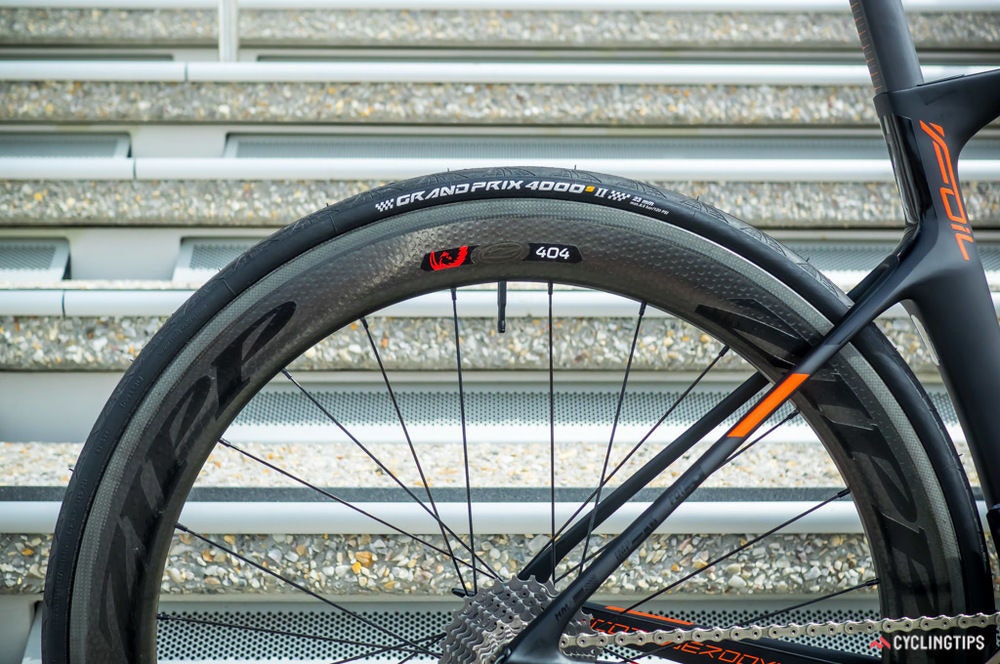
Zipp’s Firecrest 404s help the speed of the bike but they require more effort to control in windy conditions.
The Foil is primarily an aerodynamic road bike, so the 404s are a good match for the bike, both in terms of form and function. By contrast, the low-profile wheelset looked awkward on the Foil, like a lopsided haircut. At the same time, the bike never seemed to offer the same kind of ease at high speeds as it did when fitted with the 404s.
Of course, there is never any ease associated with travelling at high speeds on a bike, unless it is downhill. So when I say “ease”, I mean it relatively. I consistently found that the Foil was a little easier to keep going at high speeds, and that ease was helped a little more by the 404s. It’s not the kind of advantage that will overhaul a racer’s prospects, but most riders can expect to feel a small benefit, like a very gentle tailwind.
The new Foil retains none of the stiffness and responsiveness that defined the first-generation bike. The original bike was exceptional in this regard; by comparison, the new bike is simply satisfactory. Was it any less effective because of it? Probably not, but I still found myself underwhelmed by this aspect of the new Foil.
Heading uphill, the Foil Premium was quite effective, demonstrating a reasonable amount of agility and responsiveness. The bike suffered from some inertia on steeper slopes though, which I’d largely attribute to the wheels, but overall, it was a steady performer.
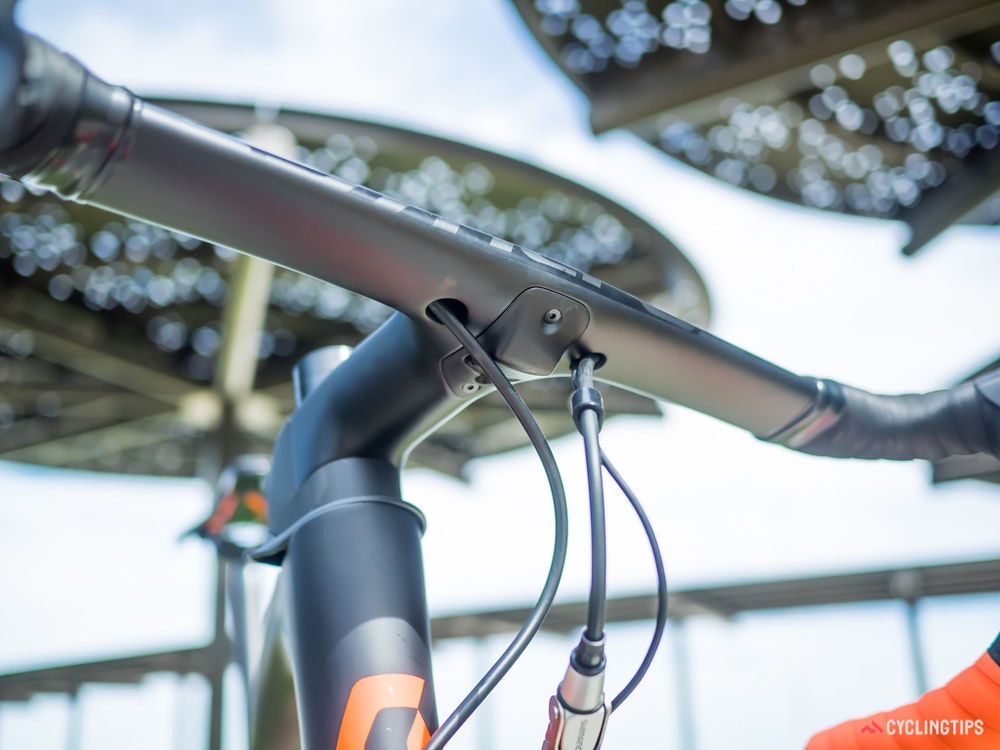
The Di2 junction box and charging point are tucked away neatly within the integrated stem/bars.
The bike handled well downhill with precise steering and a willingness to obey my commands. I found that the unpredictability of the front wheel in crosswinds undermined my confidence somewhat, so while I was always able to relax into the bike for a quick descent, I maintained a certain level of vigilance as a precaution rather than giving myself over to the thrill of the ride.
The integrated bar and stem proved to be an acquired taste. While the reach and drop immediately suited me, the aero profile of the tops created some problems, since it tilts downwards. As a consequence, my hands wanted to slide forwards and I had to make an effort to keep them in place. Hooking my palms on the rear of the tops worked, but that is where the profile comes to a point, which created its own discomfort.
Over time, I became accustomed to the feel of the tops. In the end, I avoided holding the bars close to the stem for all but brief periods in favour of a wider grip where the tops were rounder.
The Foil Premium is the second bike I’ve encountered that comes equipped with Shimano’s sprint shifters for its Di2 transmission, and I’m still excited by them. For those Di2 owners pondering their value, don’t hesitate. They add an extra dimension to the system’s interface. I also find that they are far more satisfying to use than the buttons on the levers due to their tactile feedback.
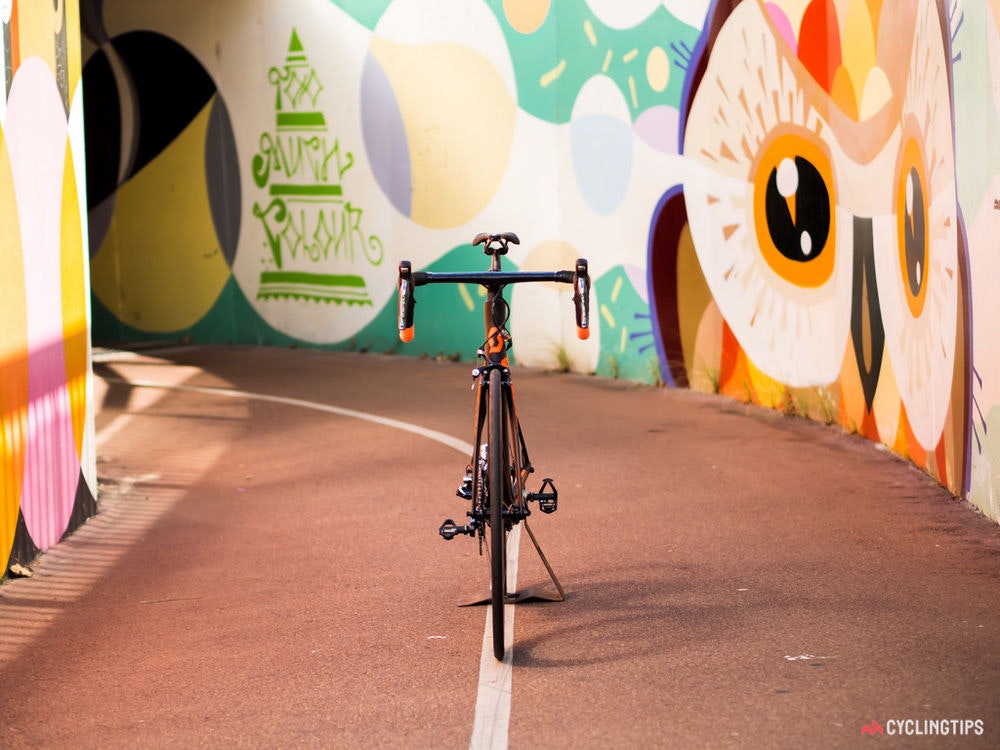
FINAL THOUGHTS AND SUMMARY
Scott has done a fine job in re-designing the Foil, providing consumers with a long list of tangible differences that distance the new bike from the first-generation design. Now the Foil is very clearly an aerodynamic road bike that offers some energy savings over the original design, but the most significant improvement has to be the extra compliance.
Where once the Foil was very clearly a sprinter’s bike best suited to smooth bitumen, now it can be considered an everyday rider that can be used on any road surface for as long as the owner has the energy to turn over the pedals. My only reservation concerns the suitability of the wheels, which lack versatility and demand extra effort in windy conditions.
For those readers that are tempted by the bike, it is worth noting that the difference between the HMX and HMF versions of the frame are likely to be very small. While I have yet to ride the HMF version of the new Foil, a side-by-side comparison of each version of the Addict revealed only minor differences in ride quality. Thus, buyers could opt for the Foil 10 (built with Ultegra Di2) and a set of high-profile carbon wheels and enjoy much of the same performance as the Foil Premium at around half the price.
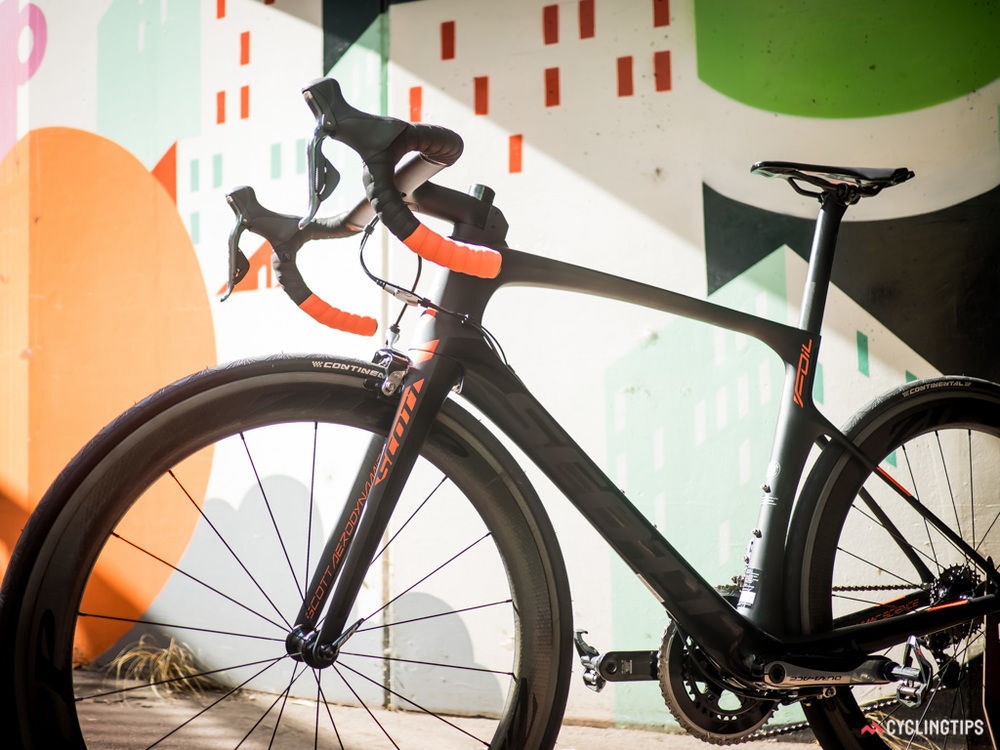
WRAP-UP
FRESH
With a new design, Scott takes the Foil in a fresh direction that is more focussed on aerodynamic performance. The weight of the bike has increased a little, and while some features have been retained, there is very little of the first-generation Foil in evidence. Most impressive is the massive increase in compliance that means the Foil can now be considered an everyday (and every road) ride. Weight, size M, 6.97kg sans pedals and cages. RRP, AU$13,500/US$11,999.
GOOD STUFF
Fast
Reasonably light
All-day comfort
Di2 sprint shifters
BAD STUFF
High-profile wheels catch a lot of wind
Aero tops of the bars are uncomfortable
Hidden Di2 junction box creates difficulties
Previous owners may mourn the missing stiffness
Chainstay-mounted calliper
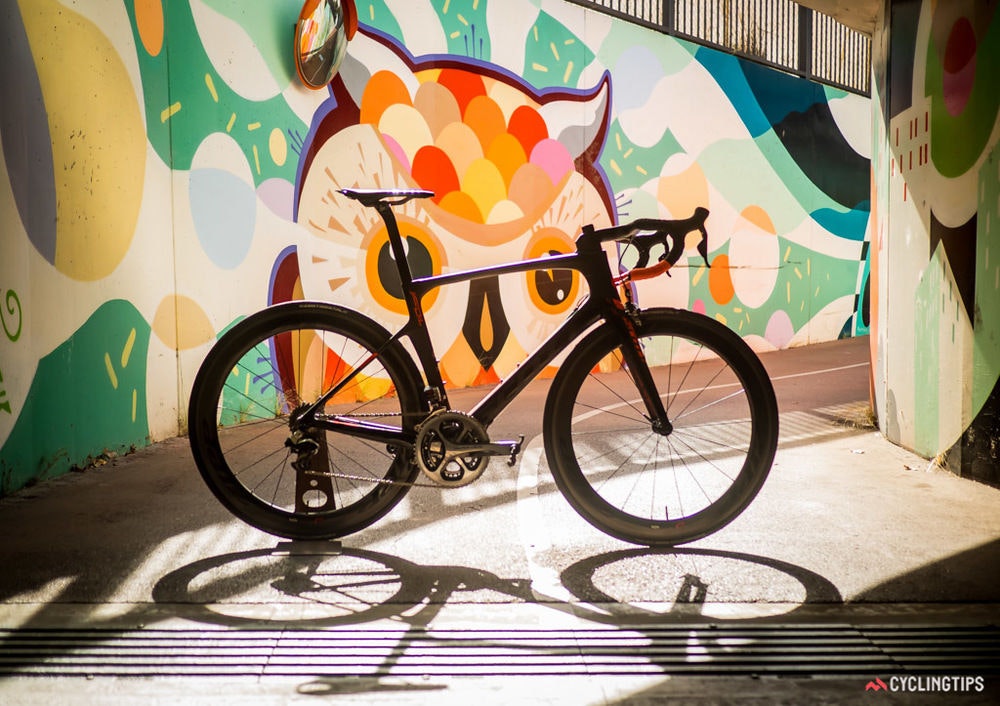
This article was originally published on cyclingtips.com

